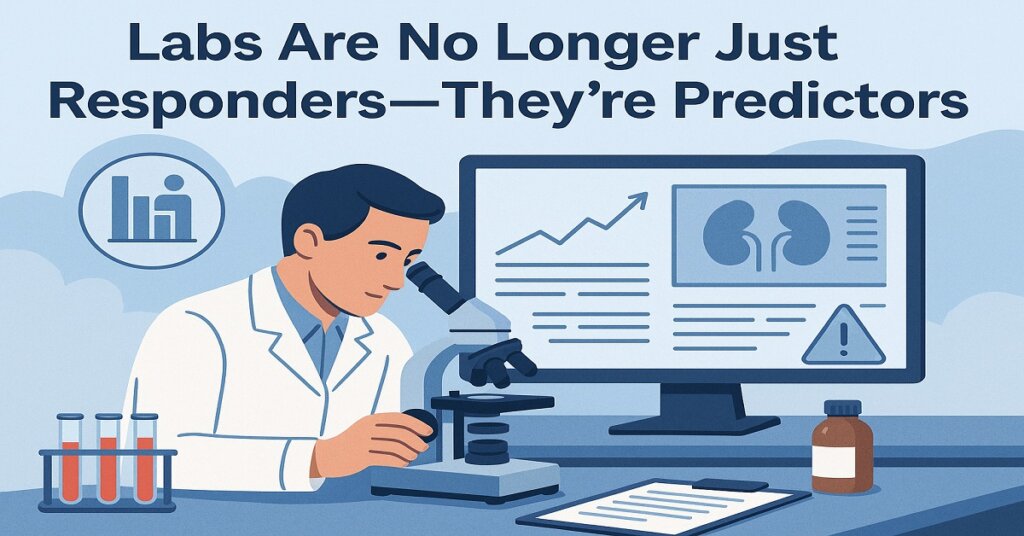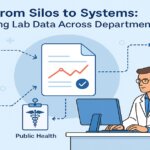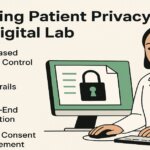
Labs Are No Longer Just Responders—They’re Predictors
How modern lab data systems like Skelab are transforming diagnostics into early intervention engines
In the past, clinical laboratories were seen as back-end responders—reacting to physician orders, delivering results, and staying behind the scenes.
But that era is ending.
Today, thanks to intelligent lab data systems like Skelab, laboratories are stepping into a proactive role—flagging patterns, anticipating illness, and helping clinicians catch diseases before they escalate. Labs are no longer just confirming diagnoses—they’re helping predict and prevent them.
Here’s how:
🧠 1. Predictive Patterns Hidden in Plain Sight
A single lab result may look normal. But when compared across time, population, or other biomarkers, subtle changes can reveal early disease.
Skelab enables:
- Trend detection across repeated tests (e.g., gradual HbA1c increase)
- Cross-patient pattern recognition (e.g., regional vitamin D deficiency)
- Baseline deviation alerts unique to each patient
💡 Example: A 20% drop in GFR over 12 months gets flagged, even if still within reference range.
🔍 SEO Tip: “early disease detection through lab trends”, “predictive analytics in LIS”
🩺 2. Supporting Preventive Medicine, Not Just Reactive Care
When lab systems flag early warning signs, doctors intervene earlier. That means:
- Catching prediabetes before it turns into Type 2 diabetes
- Flagging anemia before it impacts pregnancy
- Monitoring high-sensitivity CRP for early cardiac risk
Skelab empowers labs to:
- Auto-alert clinicians about subclinical patterns
- Generate risk-based reports
- Prioritize patients needing early attention
🧑⚕️ Human-Centered Benefit: Better outcomes with fewer invasive treatments.
📊 3. Labs as Engines of Population Health
With secure, anonymized data, labs can inform:
- Outbreak detection (e.g., spikes in respiratory panels)
- Nutritional gaps in communities
- Age-group-based risk stratification
Skelab helps labs share clean, de-identified insights with:
- Public health agencies
- Research institutions
- Hospital leadership for strategic planning
🔍 SEO Tip: “lab data in public health surveillance”, “using LIS for population insights”
⚙️ 4. Behind the Scenes: How Skelab Makes Prediction Possible
Unlike traditional LIS systems that just store and sort results, Skelab provides:
- Real-time trend dashboards
- Machine learning algorithms for risk detection
- Custom rule engines that adapt to local protocols
- EHR interoperability to enrich lab data with patient history
🔧 Tech Built for Humans: Lab teams don’t need to be data scientists—Skelab surfaces what matters, clearly.
🔄 5. What This Shift Means for Labs and Leaders
Laboratory teams are no longer just “order processors.” They are:
- Clinical risk scouts
- Data-informed decision partners
- Guardians of early action
This shift demands new workflows, new mindsets, and new tools—all of which Skelab is designed to support.
👥 Cultural Benefit: Lab professionals get the recognition they deserve—as life-saving contributors to early diagnosis.
💬 Final Thought:
The future of medicine is predictive, personalized, and proactive—and labs are leading the way. With Skelab, your lab doesn’t just respond to illness. It helps stop it in its tracks.
Have questions? Contact us, we’re always ready to assist.





